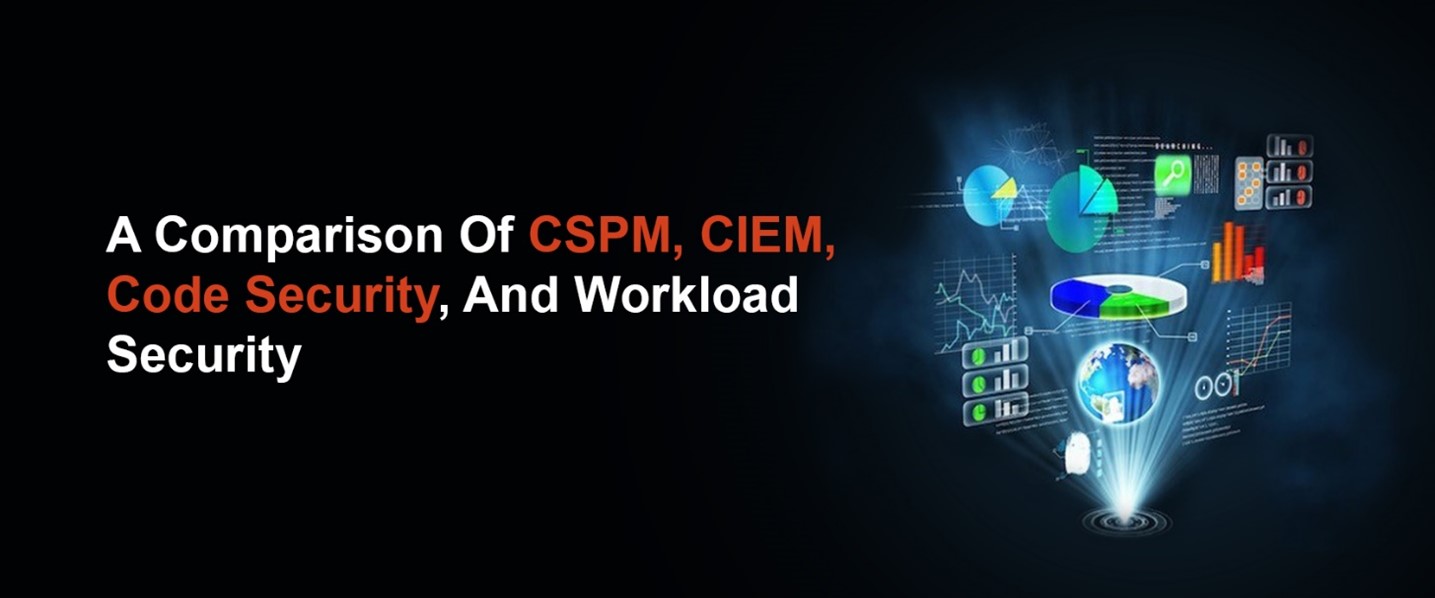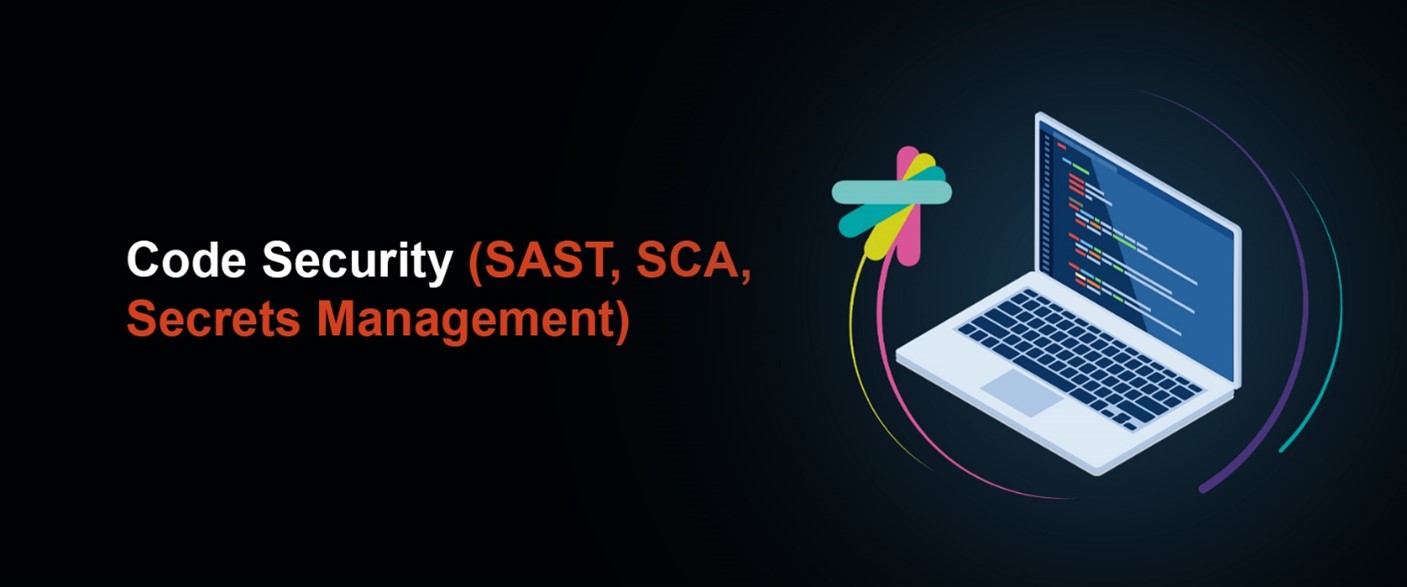A Comparison of CSPM, CIEM, Code Security, and Workload Security

In the ever-evolving realm of cybersecurity, staying ahead of potential threats is paramount. With the proliferation of cloud services, the rise of remote work, and the increasing complexity of software development, organizations face a multitude of challenges in safeguarding their assets and data. Four key areas that have emerged as critical components of a robust cybersecurity strategy are Posture Management (CSPM), Identity Security (CIEM), Code Security (SAST, SCA, Secrets), and Workload Security (CWPP). In this blog post, we'll explore each of these areas, comparing their features, benefits, and implications for organizational security.
Posture Management (CSPM)
Posture Management, often referred to as Cloud Security Posture Management provider (CSPM), is a set of policies and practices designed to ensure that cloud resources and environments are configured according to best practices and security standards. CSPM tools continuously monitor cloud infrastructure, identifying misconfigurations, compliance violations, and potential security risks.
Key Features:
- Continuous Monitoring: CSPM tools provide real-time monitoring of cloud environments, detecting changes and potential security issues promptly.
- Compliance Checks: They assess cloud infrastructure against industry standards and regulatory requirements to ensure adherence to compliance frameworks.
- Remediation: CSPM tools offer automated remediation capabilities to fix misconfigurations and security vulnerabilities promptly.
- Policy Enforcement: They enable organizations to enforce security policies consistently across all cloud resources and services.
Benefits:
- Enhanced Security: By identifying and remediating misconfigurations and vulnerabilities, CSPM helps bolster the security posture of cloud environments.
- Compliance Assurance: CSPM tools assist organizations in maintaining compliance with regulatory requirements and industry standards.
- Cost Optimization: By identifying unused resources and inefficient configurations, CSPM helps optimize cloud spending.

Identity Security (CIEM)
Identity Security, or Cloud Identity and Entitlement Management (CIEM), focuses on managing and securing identities, access, and permissions across cloud environments. CIEM solutions provide centralized visibility and control over user access, helping organizations prevent unauthorized access and data breaches.
Key Features:
- Identity Governance: CIEM tools facilitate the management of user identities, access rights, and entitlements across multiple cloud platforms.
- Access Monitoring: They monitor user activity and access patterns to detect suspicious behavior and potential security threats.
- Privileged Access Management (PAM): CIEM solutions offer capabilities for managing and securing privileged accounts and access to critical resources.
- Access Certification: They automate the process of access certification and attestation to ensure that user access rights are appropriate and compliant.
Benefits:
- Strengthened Security: CIEM helps organizations enforce least privilege access policies and mitigate the risk of insider threats and credential-based attacks.
- Improved Compliance: By providing centralized visibility and control over user access, CIEM assists organizations in maintaining compliance with regulatory requirements.
- Enhanced User Experience: CIEM solutions streamline access management processes, making it easier for users to access the resources they need securely.
Code Security (SAST, SCA, Secrets Management)
Code Security encompasses a set of practices and tools aimed at identifying and addressing security vulnerabilities in software code during the development lifecycle. Static Application Security Testing (SAST), Software Composition Analysis (SCA), and Secrets Management are integral components of code security.
Key Features:
- Static Application Security Testing (SAST): SAST tools analyze source code for security vulnerabilities and coding errors.
- Software Composition Analysis (SCA): SCA tools identify and manage open-source components and dependencies, assessing them for known vulnerabilities.
- Secrets Management: Secrets management solutions help organizations securely store, distribute, and rotate sensitive credentials and cryptographic keys used in applications and infrastructure.
Benefits:
- Early Detection of Vulnerabilities: Code security practices enable organizations to identify and remediate security vulnerabilities in software code before deployment.
- Secure Software Supply Chain: SCA helps mitigate the risk of supply chain attacks by identifying vulnerable third-party components.
- Protection of Sensitive Data: Secrets management solutions help safeguard sensitive credentials and keys, reducing the risk of unauthorized access and data breaches.
Workload Security (CWPP)
Workload Security, often referred to as Cloud Workload Protection Platform (CWPP), focuses on securing workloads and applications running in cloud environments. CWPP solutions provide capabilities for threat detection, vulnerability management, and workload protection.
Key Features:
- Threat Detection: CWPP tools employ advanced threat detection techniques, including behavior analysis and anomaly detection, to identify and respond to security threats.
- Vulnerability Management: They assess workloads for security vulnerabilities and misconfigurations, prioritizing remediation based on risk severity.
- Workload Protection: CWPP solutions provider in India offer features such as runtime protection, encryption, and micro-segmentation to safeguard workloads from unauthorized access and attacks.
- Compliance Reporting: They provide reporting and auditing capabilities to demonstrate compliance with regulatory requirements and security standards.
Benefits:
- Enhanced Threat Visibility: CWPP solutions offer visibility into workload activity and security events, enabling organizations to detect and respond to threats effectively.
- Reduced Attack Surface: By implementing security controls at the workload level, CWPP helps minimize the attack surface and mitigate the risk of breaches.
- Simplified Security Management: Centralized management consoles and automation capabilities streamline workload security operations, reducing complexity and overhead.
Conclusion:
Posture Management (CSPM), Identity Security (CIEM), Code Security (SAST, SCA, Secrets), and Workload Security (CWPP) are all critical components of a comprehensive cybersecurity strategy. While each area focuses on different aspects of security, they are interconnected and complementary, working together to mitigate risks and protect organizations from evolving threats in today's dynamic threat landscape. By leveraging the right combination of tools and practices in each of these areas, organizations can enhance their security posture and build resilience against cyber threats.